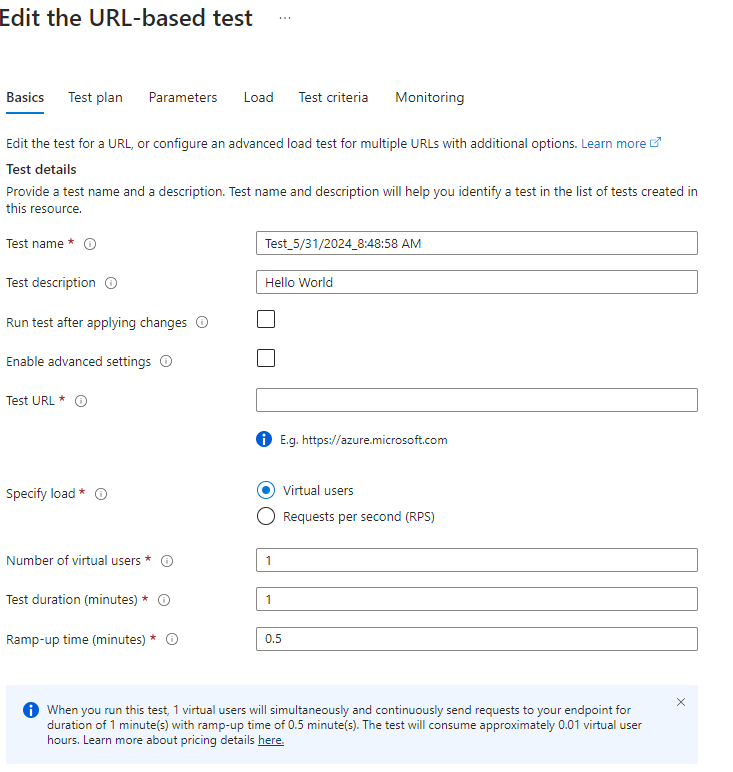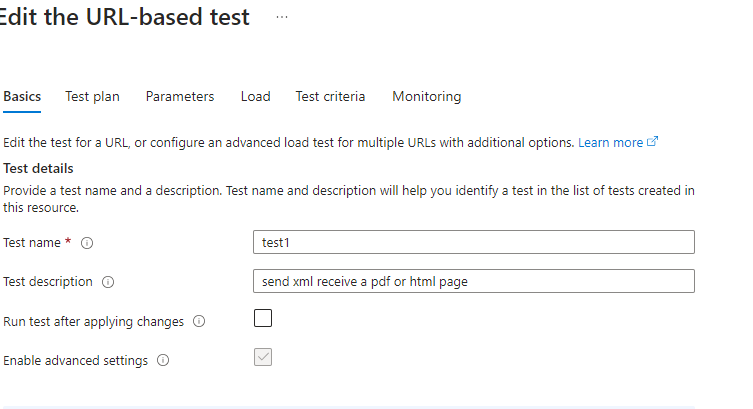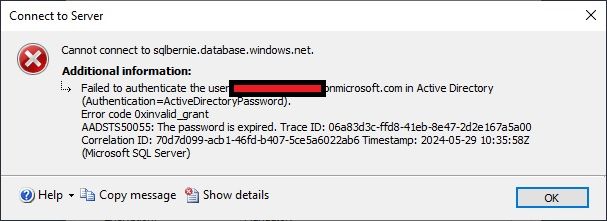Azure bites
-
@BernieTheBernie said in Azure bites:
I stand on the hose (German expression which perhaps does not translate)
No, it does not. Literally, yes, obviously, but I have no idea what the idiom means.
-
has a translation, but unfortunately not etymology.
-
- (colloquial) to be puzzled, to be at a loss
Ah, thank you. I am no longer standing on the hose.
-
-
One assumes that if you are standing on the hose, no water is forthcoming and inspiration and enlightenment are as surely blocked as the hose.
-
@Arantor said in Azure bites:
inspiration and enlightenment are as surely blocked as the hose.
So you're hosed?
-
@HardwareGeek I don't have a hose.
-
@Arantor said in Azure bites:
@HardwareGeek I don't have a hose.
That's ok, it's 2024, we don't define people by the presence/absence of a hose.
-
-
@Watson granted, that's a special number. A really special number.
-
So we are trying out Azure Load Testing. My team lead created a simple test just to make sure it worked. Well, it ended up making 600,00 requests, and it looks like it cost $13. Not a huge amount of money, but he was expecting such a small first test to be free, so we don't want to proceed until we're sure we're in control of the process.
So by default, it's set by virtual users, and this was the one that gave us 600K hits. So I tried setting it to the other option, Requests Per Second, because that looks like it gives you more direct control. But it gets complicated, and my test ended up having 300K requests, which was a lot more than I was aiming for.
So I figured that before I actually ran it, I would go back and confirm that it was set up the way I wanted it. But this is not easy to tell. In particular, there's a difference between how much information you can see if you go back and double-check.
Screen you see if you used the default, Virtual Users: (Note that I redacted the test URL, in this picture, it is actually filled out.)

But if you select Requests Per Second and go back to see what you set it to:

Note that a lot of information is missing in the second screen. So you can't tell how it's actually set.
I may also cross-post this in the Help topic, because, in addition to it being a WTF, I'm looking for advice.
-
@Sampa said in Azure bites:
I'm looking for advice.
The portal is sometimes buggy, but you should be able to see the underlying JSON somewhere, and that should be authoritative source of information—on the summary page of every resource there should be a JSON View linklet in the top left, and there is usually an “Export Template” at the bottom of the left side menu where it should include subresources.
-
@Arantor said in Azure bites:
One assumes that if you are standing on the hose, no water is forthcoming and inspiration and enlightenment are as surely blocked as the hose.
Since the expression is not recorded before 20th century (more like 1930s onwards), it is almost certainly based on the 1895 movie: https://moviessilently.com/2020/12/21/the-sprinkler-sprinkled-1895-a-silent-film-review/
-
The
az account get-access-token, which is used for most authentication needs during development and deployment, is dumb.You can be logged in to multiple tenants and subscriptions at the same time, with the same account (that might be a guest in other tenants) or multiple accounts.
One of the accounts is set as active, but you can use the other accounts by explicitly providing the subscription ID.
But if you provide only tenant ID—which is all most applications know—rather than looking for some entry that matches that tenant, it tries to get token for the active account in the specified tenant. So if you have one account that is a guest in many places, it works, but if you actually have separate accounts, it will give you an error and you have to set the active account.
… a bit of a pain when you are switching between two projects with separate accounts.
-
So I'm reconfiguring this Azure database when terraform spits out:
│ Status: "OperationInterrupted" │ Code: "" │ Message: "The operation on the resource could not be completed because it was interrupted by another operation on the same resource." │ Activity Id: "" │ │ --- │ │ API Response: │ │ ----[start]---- │ {"name":"bflmpsvz-bflm-psvz-bflm-psvzbflmpsvz","status":"Failed","startTime":"2024-06-18T13:03:33.613Z","error":{"code":"OperationInterrupted","message":"The operation on the resource could not be completed because it was interrupted by another operation on the same resource."}} │ -----[end]-----There was nothing else going on with that resource, I'm still setting it up for crying out loud!
Before that I was rebuilding AKS when it died of some other spurious error getting a token. This whole API thing is a house of cards. A particularly rickety one.
Of course it completed fine on re-running. That's why I'm reluctant trying to put this thing into CD and stick with the commit+apply+push-if-successful approach. It would be too much back-and-forth to run it on build server.
-

Azure CLI version 1 is antedilluvial. I didn't even know such thing existed until now. The version 2 has been current for years. And it's a pretty thin layer over the REST API too. Adding the support should be simple. There's really no excuse for not supporting it.
… though, it actually might be supported and the documentation is out of date instead. That's always a possibility with Microsloth.
 auf dem Schlauch stehen - Wiktionary, the free dictionary
auf dem Schlauch stehen - Wiktionary, the free dictionary
